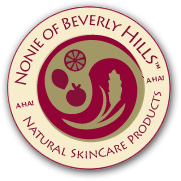
The ABCs of Skincare: Understanding AHA for Beginners
Share
In the vast landscape of skincare, navigating through the alphabet soup of ingredients can be overwhelming, to say the least. Amidst this confusion, one acronym stands out for its potent yet gentle benefits: AHA. Alpha Hydroxy Acids (AHAs) are among the most popular and effective skincare ingredients, revered for their ability to transform the complexion. For skincare novices, understanding AHAs is essential, as they unlock a world of radiant, youthful skin. So, let's delve into the ABCs of skincare and demystify the wonders of AHA.
What are AHAs?
AHAs are a group of naturally occurring acids primarily derived from fruits and milk. The most common types of AHAs found in skincare products include glycolic acid (derived from sugar cane), lactic acid (derived from milk), mandelic acid (derived from almonds), and citric acid (derived from citrus fruits). These acids work by exfoliating the skin's surface, promoting cell turnover, and revealing a fresher, smoother complexion underneath.
The Benefits of AHAs
-
Exfoliation: AHAs gently loosen the bonds between dead skin cells, facilitating their shedding and revealing brighter, healthier skin underneath. This exfoliating action helps to unclog pores, refine skin texture, and diminish the appearance of fine lines and wrinkles.
-
Hydration: Unlike some other exfoliants, AHAs have humectant properties, meaning they attract moisture to the skin. This helps to improve hydration levels and maintain a plump, supple complexion.
-
Hyperpigmentation: AHAs can help fade dark spots, sun damage, and uneven skin tone by inhibiting melanin production and promoting cell turnover. With consistent use, they can contribute to a more even, luminous complexion.
-
Collagen Production: Some AHAs, particularly glycolic acid, stimulate collagen synthesis in the skin. Collagen is a protein that provides structural support, helping to keep the skin firm, smooth, and youthful-looking.
How to Incorporate AHAs into Your Skincare Routine
-
Start Slowly: If you're new to AHAs, it's crucial to introduce them gradually to allow your skin to acclimate. Begin with lower concentrations and less frequent use, then gradually increase as your skin adjusts.
-
Patch Test: Before applying AHA products all over your face, perform a patch test on a small area of skin to check for any adverse reactions or sensitivity.
-
Choose the Right Product: AHAs are available in various skincare products, including cleansers, toners, serums, and moisturizers. Choose a product and formulation that suits your skin type and concerns.
-
Use Sun Protection: AHAs can increase skin sensitivity to the sun, so it's essential to apply sunscreen daily, even on cloudy days, to protect your skin from harmful UV rays.
Who Should Use AHAs?
AHAs are generally suitable for most skin types, including dry, oily, combination, and sensitive skin. However, individuals with extremely sensitive or reactive skin may need to exercise caution and consult with a dermatologist before incorporating AHAs into their routine. Additionally, pregnant or breastfeeding individuals should consult with their healthcare provider before using AHAs.
